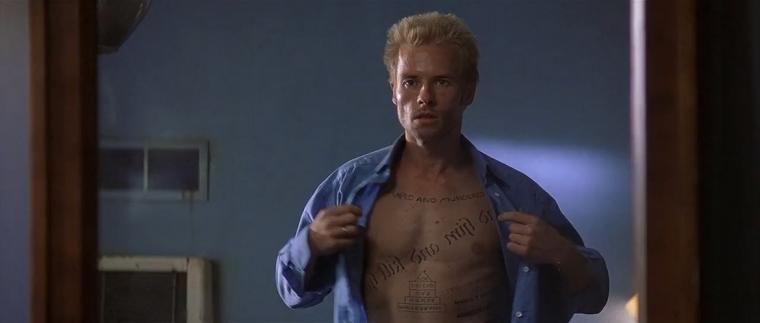
Marking the end of the first two decades of the 2000s, 2019 offered a number of perfect springboards for discussion about the state of moving pictures – all of them touched by the massive Disney empire.
Star Wars, as a single Skywalker narrative begun by George Lucas in 1977, ended.
The launch of Disney+ heralded the true beginning of the Streaming Wars – in which nearly every media entity holds its intellectual property close and charges users for access to it. It also ended the brief era when one could subscribe to a few services and enjoy access to just about anything.
Avengers: Endgame was the behemoth capping nearly two-dozen movies over 11 years in the Marvel Cinematic Universe – the sort of sustained audience engagement that every media company now strives for.
The last item prompted no less than Martin Scorsese to complain that MCU titles are “closer to theme parks than they are to movies as I’ve known and loved them throughout my life, and that in the end, I don’t think they’re cinema.”
Scorsese’s argument isn’t really about Marvel, though. As he wrote in the New York Times, the real issue is how Marvel – and Star Wars, and Disney as a family-entertainment company, and every big-budget movie and franchise – distort the marketplace and shove out the little guys: “[T]he most ominous change has happened stealthily and under cover of night: the gradual but steady elimination of risk. Many films today are perfect products manufactured for immediate consumption. ... [T]hey lack something essential to cinema: the unifying vision of an individual artist.”
I largely agree with Scorsese, despite the irony that his The Irishman (running nearly half an hour longer than Endgame, and as much a product of its digital age as that blockbuster) wouldn’t exist but for the self-interested largess of Netflix – the corporate entity that’s as responsible as Disney for kicking risk to the curb. And it’s not lost on me that his movie can be comfortably described as a “perfect product” for film buffs of a certain age – a decades-spanning gangster epic with De Niro, Pacino, Pesci, and Keitel.
But here’s the reality: Lovers of movies have never had it so good.
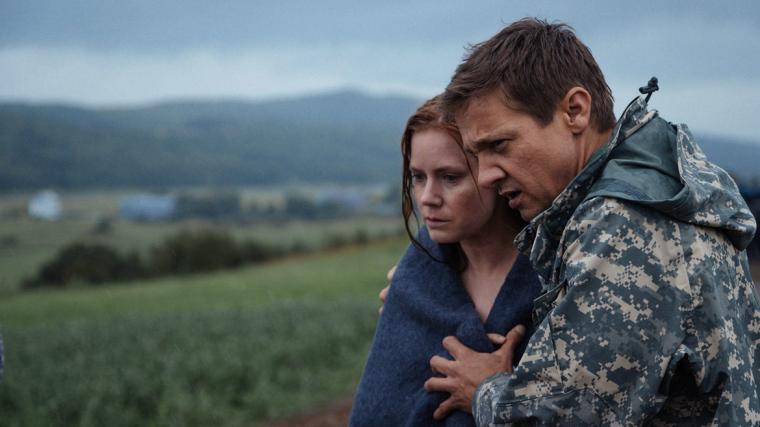
The basic progression is startling (setting aside early adopters of new formats). Four decades ago, you were limited to movies on television and the films being shown at your local (one- or two- or four-screen) exhibitor. Three decades ago, you had the additional option of your nearby video store, and movie theaters had more screens. Two decades ago, home video was priced for consumer purchase, DVDs and widescreen televisions meant that movies could be seen at home in a way close to their makers’ intentions, and a little company called Netflix offered an exponentially greater selection of titles. Ten years ago, Blu-ray brought us movies in high definition, and Netflix had begun the shift from disc delivery to streaming. And today, you can watch something approaching a complete history of cinema on your phone, with dozens of media companies also jockeying for your attention by producing as much original content as possible.
So running parallel to the constrictive trend Scorsese bemoaned is a new age, one that targets increasingly small portions of the population and gives a platform to demographic groups and perspectives that have been traditionally marginalized. And much of this torrent is indeed characterized by “the unifying vision of an individual artist.” So Disney – in all its collected components – might indeed hog way too much space at the multiplex, but that’s really just a tiny part of the picture.
The real distortion of the marketplace is neither limited access nor limited voices; it’s the challenge of finding the stuff that might speak to you in the ever-more-crowded media landscape.
And that brings us to the task at hand, which is a project Mike Schulz and I started in 2009 and have revisited every five years. Both of us choose 100 “favorite” movies from the 2000s and provide as much (or little) commentary as we want.
For this edition, I’m going to limit my discussion to new titles on the list, even though I desperately want to revise previous entries. (Commentary on everything else can be found here.) Furthermore, I’m fully integrating television into my list, because it and movies are fundamentally operating in the same space – in terms of your limited attention, the people making content, and the people appearing in it.
To be clear, I am not saying television is the new movies, or that it does the same thing, or that it does the same thing but longer. What I mean is that for those of us who value “the unifying vision of an individual artist,” television today is at least on a par with the movies.
Nearly all the titles on this list are, to a large extent, the product of such a “unifying vision,” although not necessarily in the strict tradition of the writer/director auteur. My hope is that in this overstuffed marketplace, readers will be intrigued enough by something unfamiliar to seek it out.
But hey, enough of my yackin’. What do you say? Let’s boogie.
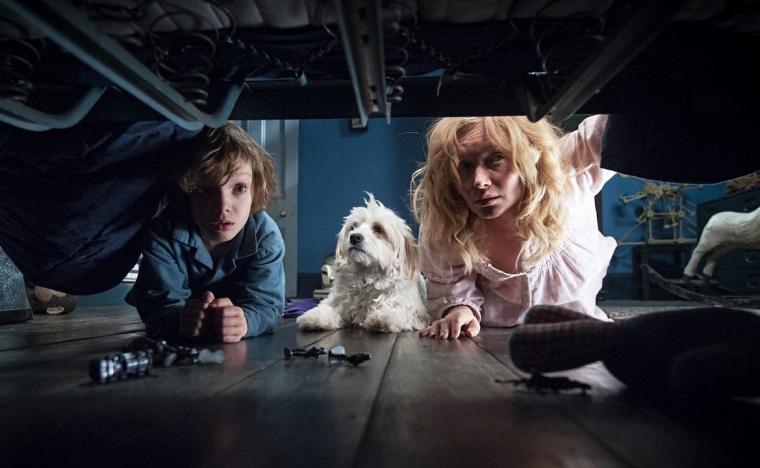
Top 10 (in Rough Order of Preference)
Memento (2000)
Arrival (2016). I’m not normally the type of person who finds much value in comparing movies to their source material, but it’s fascinating to read Ted Chiang’s bare-bones “Story of Your Life” in the context of its richly realized film adaptation. The movie expands the plot to include a world military crisis, and while that was – practically speaking – necessary to flesh out the narrative to feature length, it does something essential: It gives the filmmakers the breathing room and space to make the cryptic opening fade, and to hide its real subject in plain sight. It doesn’t skimp at all on the sci-fi and is a marvel of production design, but it’s first and foremost an honest and searching tearjerker.
The Babadook (2014). Many great horror movies become even greater once you process their metaphors. In Jennifer Kent’s instant classic, the metaphor is so front-and-center that it requires no decoding at all. It’s that clean fusion of monster and meaning that elevates The Babadook. If the creature’s name and execution are fundamentally silly, there’s no joke in how it expresses a widowed mother’s complicated emotional life. It’s not merely a manifestation of her grief and parental frustration; it’s the sum of her anger, sadness, resentment, and fatigue in one raging package. But the smartest touch is Kent’s refusal to dispatch the monster, because you can’t get rid of the Babadook. The elegant ending, however, suggests that there are ways to safely contain the ugly stuff within.
The Leftovers (2014-7, television). The HBO series has a reputation for being grim and hard to watch, especially in a first season that was largely faithful to Tom Perrotta’s novel. Any remotely human show that starts with 2 percent of world’s population disappearing suddenly and inexplicably will inevitably be driven by grief and confusion. The Leftovers, however, is not remotely human; it’s super-human, in at least three senses: its interest in the unknown and unknowable of the universe, its deep empathy for its characters, and its unqualified greatness. It’s grim, but it’s also funny, and it veers off in so many odd directions, with such full commitment, that it’s breathtaking.
Instead of replicating the novel’s low-key groundedness, Damon Lindelof seized on strange details and transformed them into essential components of a broken world. And then he basically blew up the show for the second season, and then again for the third, and crafted a world every bit as strange as that of his previous show Lost. Nearly two whole episodes out of a scant 28 – including the penultimate one – take place outside reality. There’s a sex boat with a lion and God himself. Dick jokes. Karaoke as the catalyst for an epiphany. A preacher and an old dude convinced that the latter’s son is the Messiah. A storm of biblical proportions. An actor from Perfect Strangers promising that one can go where all those missing people went.
But Lindelof never forgets what the story is really about. Just as the show threatens to dash off to a place we were promised it would never go, Lindelof and Perrotta in the finale strip away the weirdness and close with a quiet, extended conversation between two people at a kitchen table. In that talk is a story, pretty clearly entirely fabricated. In the fiction is real truth, however, and that’s an apt summary of The Leftovers.
Deadwood (2004-6, television)
The Royal Tenenbaums (2001)
Enemy (2013)
Fargo: Season Two (2015, television). My memory was that it was easily the best season of Noah Hawley’s FX anthology series based on the Coen brothers’ classic. A recent viewing set me straight: It’s nearly perfect (even in its dead-end bits), and I think it’s a substantial improvement on its movie inspiration – an intricate tapestry of time, place, language, and character. Set in 1979, its cultural themes include post-Vietnam disillusionment, the hope brought by Ronald Reagan, the falseness of that hope, and corporatization. There are at least a dozen vividly drawn characters, a mob war, UFOs, and Reagan himself (played by Bruce Campbell, no less). It loves its split screens. And in even its weirdest curlicues (and they are legion), it knows exactly what it’s doing and where it’s going. The real key, though, is that it dumps the Coens’ condescension and finds humanity and dignity in nearly every character.
Kill List (2011)
Under the Skin (2013)
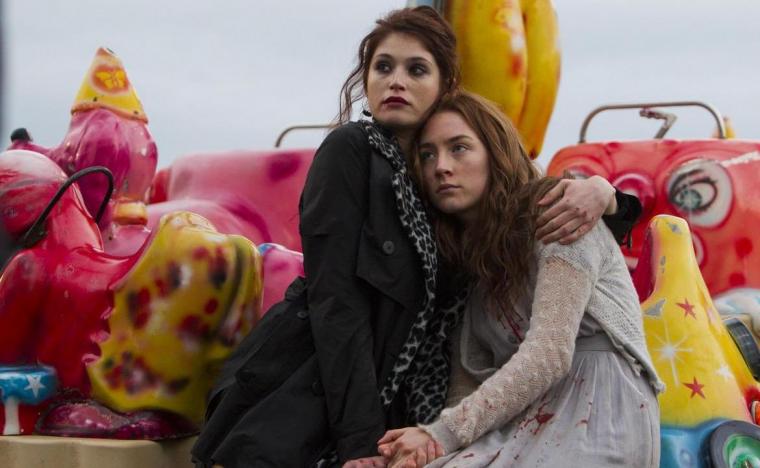
The Next 90 (Alphabetically)
25th Hour (2002)
28 Days Later (2002)
American Splendor (2003)
Annihilation (2018). In broad outline, Alex Garland’s movie is a standard story of an invasion by a hostile alien force. And if it were merely that, it would still be pretty fantastic simply because of the production design – the refraction of light splashing rainbows everywhere, horrifying creatures, and mutations stuck between the grotesque and the beautiful. But Annihilation is not merely that; it is, as the movie makes clear, not that at all. Certainly, Earthlings see this alien thing as a threat, but it’s really just a neutral agent of change – and a symbol of its inevitability, whether in a relationship or in the human body. For many people, I suspect, the movie is hard to like because its tone feels distant and indifferent, and its philosophy seems to approach nihilism. Yet it resonates for me in large part because it embraces our uncertainties – about identity, our place in the universe, and our future, as individuals and as a species.
Another Earth (2011)
The Aristocrats (2005)
Arrested Development: Seasons One and Two (2003-5, television)
The Assassination Jesse James by the Coward Robert Ford (2007)
The Blackcoat’s Daughter (2015). The story in writer/director Oz Perkins’ atmospheric chiller is ultimately much simpler than its elliptical nature would suggest, and one might be inclined to think of its structure as a cheap way to mask its faults. That would be a mistake, because his triptych is designed to keep the viewer from falling back on any easy explanation for the gruesome goings-on. In a miraculous way, the movie lives in the gaps of its plots outline, forcing the viewer to confront the troubled mind as something fundamentally mysterious and unknowable.
Byzantium (2012). I quickly decided this was Neil Jordan’s apology for Interview with the Vampire. Told through the gorgeously shot eyes of a centuries-old teenager (Saoirse Ronan), it works as a story of a mother-daughter relationship, and as a story of a fraught friendship/romance. But it really works in emphasizing a specific facet of this particular vampire’s existence: the desperate need to tell her story. In a larger sense, its two lead characters represent marginalized and abused women, but there’s also a lot of passive-aggressive humor; if your daughter has been stuck in puberty for 200 years, she’s had plenty of time to come up with sharp quips.
Camera (2000, short)
Capote (2005)
Castle Rock: “The Queen” (2018, television). It’s fortunate that the first season of Hulu’s Stephen King homage is good enough that I can recommend it beyond this episode; you’d be kind of lost without the remainder. The funny thing is that in a show that’s by definition derivative, “The Queen” is its most derivative, immediately invoking Lost’s “The Constant” and – through a piece of music – the more-recent Arrival. But if the form, theme, and narrative function of this Sissy Spacek showcase are very familiar, Castle Rock has an enormously successful trick up its sleeve: The traveling-through-time conceit is intended not literally but as an immersive expression of its main character’s dementia, and her efforts to stay oriented within it.
Chernobyl (2019, television). I have no idea whether HBO’s miniseries is accurate in the details and larger arc of the nuclear disaster, its aftermath, and Soviet politics. But it feels unerringly real in all those areas, and it manages a stunning balance: grim without being depressing, expansive without being anonymous, and entertaining without feeling cheap or simplistic. As one might expect, it’s an indictment of bureaucracy, but it resonates because it’s so easy to see the same problematic forces at work everywhere.
Confessions of a Dangerous Mind (2002)
The Conjuring (2013)
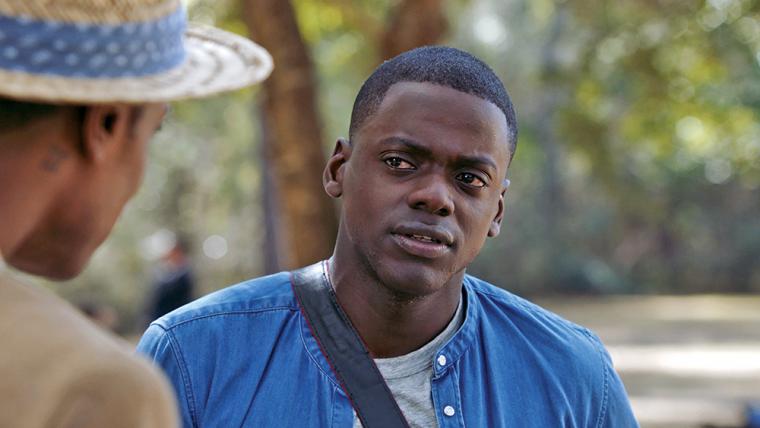
Dark: Season One (2017, television). It’s hard to heartily recommend Netflix’s German science-fiction series for two reasons: It still has a season left, and last year’s second season sent it down the path of diminishing returns by focusing on mythology above all else. Remember how far Lost crawled up its own ass with the Jacob and Man in Black stuff? It’s kinda like that, and the comparison with that show holds in myriad other ways. But even in its sophomore slump Dark nailed its emotional sucker punches – that’s a compliment, I swear – and its primary appeal is undiminished: It dares you to try to keep up as it grows ever more complex.
The Deep End (2001)
The Descent (2007, international version)
The Devil’s Backbone (2001)
Donnie Darko (2001, original theatrical version)
Dunkirk (2017). As Christopher Nolan’s star rose (and rose), he essentially got carte blanche and ran with it, resulting in Interstellar. I’d like to think that he saw the error of his ways, resulting in Dunkirk – a short, compact, seemingly low-concept World War II movie that played to his strengths while still testing his mettle as a filmmaker and largely avoiding his shortcomings. (Chief among the latter, of course, are words.) One of his consistent failings has been the coherent staging of action for the audience, and it rears its head here in at least one sequence, and it’s present in a general sense in the difficulty of keeping straight a whole bunch of young white guys who barely speak. For the most part, though, the writer/director works with enormous clarity, and it’s easy to forget how Nolan the whole enterprise is, with its three distinct time frames intercut as if they were happening simultaneously. His skill in that area is nearly miraculous, requiring little work on the part of the viewer and making it look effortless.
Eastern Promises (2007)
Enough Said (2013)
Eternal Sunshine of the Spotless Mind (2004)
Exit Through the Gift Shop (2010)
First Person: “Leaving the Earth” (2001, television)
The Five Obstructions (2003)
Get Out (2017). It’s easy to articulate the ways Jordan Peele’s ingenious debut works as comedy, as horror, and as social commentary. Yet I think its real secret is its lightness of tone. It would have been easy to infuse this tale of body-snatching white liberals with righteous indignation, but Peele’s work here as writer and director is distinguished by its restraint – the way he allows the ideas and themes of racial envy and subjugation to speak for themselves through the narrative.
Ginger Snaps (2000)
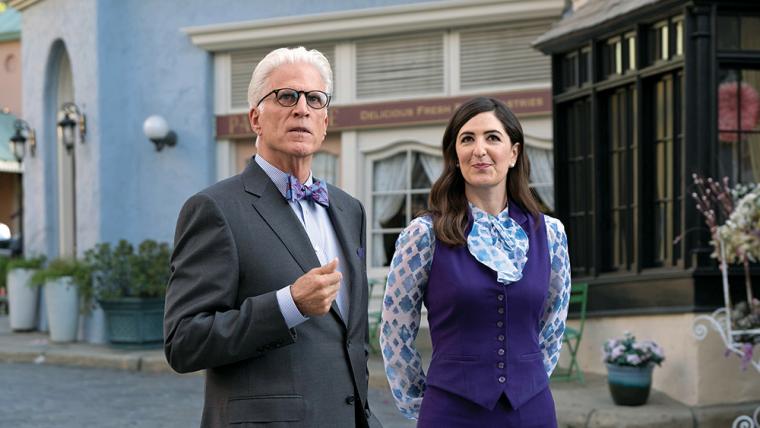
The Good Place (2016-20, television). We’ll soon see if Michael Schur can bring it satisfyingly to a close, but it doesn’t really matter. In a television environment in which the primary goal of a successful show seems to be dragging things out for as long as possible, this NBC series has never been content with the status quo. Other shows might spend a season on a plot that Schur dispenses with in an episode, and the jokes come as fast and furious as the story. That would probably be enough for a pleasant diversion, but The Good Place’s rigorously imagined afterlife and earnest interests in philosophy and morality make it something special.
The Grand Budapest Hotel (2014)
Hannibal (2013-15, television)
The Haunting of Hill House (2018, television). Mike Flanagan’s 10-episode Netflix series is not great, but it’s pretty great for its first six episodes, and the weak back end has one great, slowly developing horror, and its easy happy ending has some pretty great stuff shading it darker underneath the surface. It’s on this list for a simple reason: I’ve never seen a long-form work of horror that sustains itself nearly this well, which is especially impressive considering that it’s a standard haunted-house story.
Here Comes the Devil (2012). A clear descendant of the oddball horrors Don’t Look Now and Picnic at Hanging Rock, with some clear nods to Carrie, this deeply strange and aggressive Mexican movie is a wet dream for psychoanalysts and film buffs. A brother and sister wander into an ominous cave, and there’s something off about them when they return the next day. You’d never know it from the porn-y exploitation vibe of the Trojan-horse opening, but it’s also a detailed, subtle, rich, lean, ambiguous, and carefully constructed portrait of a mother’s gnawing need to know a truth she can’t live with.
Hereditary (2018). Some movies work in spite of themselves, and Ari Aster’s debut feature has a doozy of a flaw suggested by its very first shot. Literally nothing that happens is the result of a character acting freely; Aster deflates his horror by making it the inevitable outcome of a larger conspiracy. And yet: It’s filled with such pain and raw emotion that it succeeds as a horror movie and a family tragedy even as it falls apart as a story that rewards any investment. (Most of what I just wrote also applies to his second movie, Midsommar. We’ll see in five years how I feel about them with a little more distance.)
The House at the End of Time (2013). This Venezuelan chiller is a ghost story without ghosts, which is not to say that its home isn’t haunted. If that’s confusing, there’s a pretty big hint in the title, and I’ll leave it for you to discover the rest.
The House of the Devil (2009)
Housebound (2014). For many, many years, I’ve told anybody who would listen that horror and comedy don’t mix – by which I mean that one (usually comedy) ends up dominating to the detriment of the other. That’s still mostly true with this New Zealand movie, whose strange goings-on are serially and amusingly explained by a checklist of horror clichés. It’s not exactly scary, but its premise – a young woman trapped in a spooky house because of her house arrest – pays enormous dividends in terms of tension before the movie sticks a joke of a landing that, against all odds, works perfectly.
Incident at Loch Ness (2004)
Inglourious Basterds (2009)
Intacto (2001)
Justified (2010-15, television)
Land of the Dead (2005)
Lantana (2001)
Let the Right One in (2008)
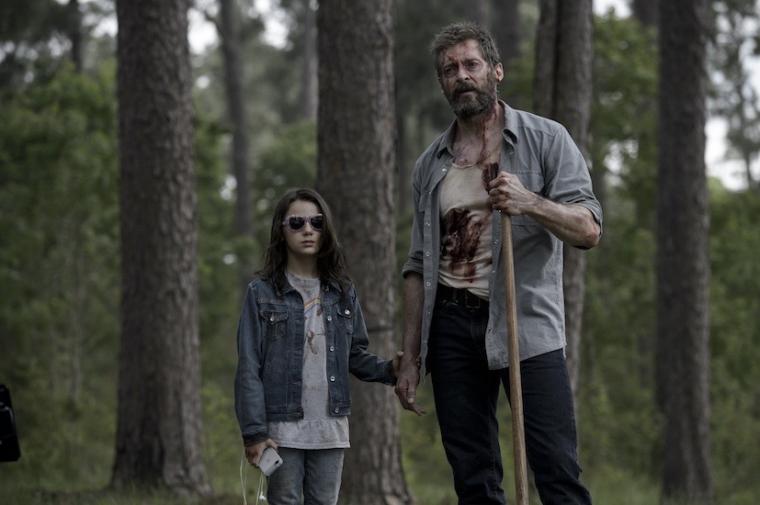
Logan (2017, “noir” version). I’d love it if studios approached their aging comic-book properties with the care and love that James Mangold put into this study of a long-past-his-prime Wolverine and a mentally failing Professor X. It is, in many ways, a typical X-Men story, but it grabs your attention immediately with its specificity, its R-rated language and violence, and its Western styling – divergences enhanced by its black-and-white version.
Looper (2012)
Margaret (2011)
Moneyball (2011)
Moon (2009)
The Mothman Prophecies (2002)
Mulholland Dr. (2001)
No Country for Old Men (2007)
The Office (2001-3, television)
Oldboy (2003)
Pan’s Labyrinth (2006)
Perfume: The Story of a Murderer (2006)
The Prestige (2006)
Primer (2004)
Prisoners (2013)
Rachel Getting Married (2008)
Rampart (2011)
Red Riding (2009, television)
Requiem for a Dream (2000)
Safety Not Guaranteed (2012)
A Serious Man (2009)
Seven Psychopaths (2012)
Shotgun Stories (2007)
Shutter Island (2010)
Skyfall (2012)
Slings & Arrows (2003-6, television)
The Social Network (2010)
Spider (2002)
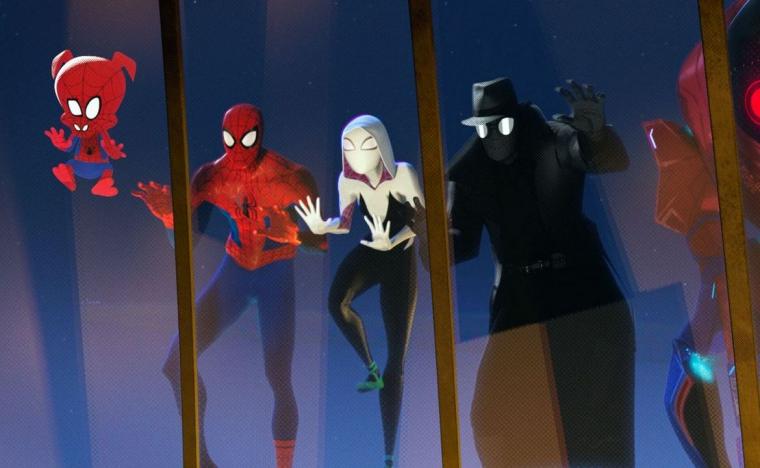
Spider-Man: Into the Spider-Verse (2018). I loved Spider-Man: Homecoming, but 17 months later came this – highlighting how the live-action MCU entry was merely a very-good execution of an ordinary superhero story. Spider-Verse embraces the full potential of animation, from its hilarious variety of Spider-Things to its many ridiculous touches to its aggressively stylized villain. Even if it weren’t so spectacular on many levels, I would watch it regularly just to get lost in its visual textures.
Spider Forest (2004)
Star Wars: The Last Jedi (2017). Having now seen The Rise of Skywalker twice, I finally get it: Rian Johnson’s entry into the Skywalker saga doesn’t really fit the vision created by George Lucas and continued by J.J. Abrams. That’s one reason I love it so much. But if we move past that issue of taste, it seems self-evident to me that Johnson and his collaborators – in terms of filmmaking craft – gave us easily the best movie in the franchise. The direction and editing – with a big assist from the sound – generate suspense and release through rhythm, resulting in at least a dozen thrilling moments that still feel like magic, no matter how closely I study them.
Stranger Than Fiction (2006)
Take Shelter (2011)
Terminal Bar (2003, short)
Terriers (2010, television). You probably have never heard of this one-season show from FX, and you almost certainly didn’t watch it. You should correct that now, even if it takes a few episodes to fully reveal its ramshackle charms. The premise and plot are purely rote – a pair of wannabe California private eyes and a conspiracy much bigger than they realize – but the characters and chemistry are something to behold, lived-in and compelling.
The Terror: Season One (2018, television). There’s a monster in this AMC show, and I’m still undecided whether it’s even necessary. It works well enough as a metaphor, but the perils faced by the sailors of this real-life 19th Century Arctic expedition are so clearly and well presented that the supernatural feels nearly superfluous. The level of rich detail here – in character, language, circumstance, production design, and incremental horror – is so convincing that the experience is nearly empathetic; you can feel the cold, the hunger, the isolation, and the desperation.
Tinker Tailor Soldier Spy (2011)
Tongues & Taxis (2000, short)
Touching the Void (2003)
Upstream Color (2013)
WALL•E (2008)
The Wire (2002-8, television)
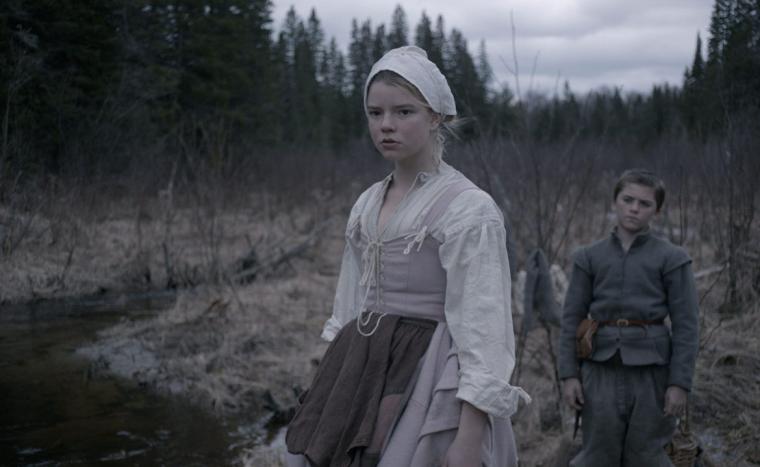
The Witch (2015). As with a fair number of other horror movies here, I’m not convinced Robert Eggers’ The Witch is actually a good movie. That’s the freedom of the genre: It only needs to get under your skin to be entirely effective. But unlike Hereditary, another movie on this list, there’s nothing I can point to in The Witch that would disqualify it from being a good movie. Eggers builds his movie to a climax of ambiguous ecstasy that works precisely because it explains nothing, and even undermines the very idea of evil. It’s a moment of transcendence for the main character, and it troubles in large part because it exists entirely outside of her culture’s moral code.
Zodiac (2007)
Pushed Out of the Top 100
Black Mirror (2011-, television)
The Dark Knight Rises (2012)
Dogville (2003)
Flight of the Conchords: Season One (2007, television)
Ghost Town (2008)
Holes (2003)
How to Train Your Dragon 2 (2014)
Lost: “The Constant” (2008, television)
Louie (2010-15, television)
Moulin Rouge! (2001)
The Princess & the Frog (2009)
Review (2014-17)
Rubicon (2010, television)
Shattered Glass (2003)
Sinister (2012)
Wolf Creek (2005)
Might Still Be in the Top 100 with Another Viewing
Bronson (2008)
Dancer in the Dark (2000)
Dogtooth (2009)
Lincoln (2012)
Murderball (2005)
Stone Reader (2002)
Thirst (2009)
Tristram Shandy: A Cock & Bull Story (2005)
Might Enter the Top 100 with Another Viewing
Atlanta (2016-, television)
Ex Machina (2014)
Inside Out (2015)
The Lobster (2015)
Missing Link (2019)
Russian Doll (2019, television)
Silver Linings Playbook (2012)
Spotlight (2015)
Jeff Ignatius is the former managing editor of the River Cities’ Reader.
Also visit “100 Favorite Movies, 2000-2019: Mike Schulz.”










